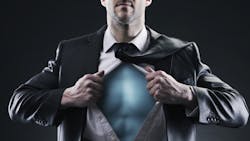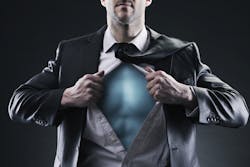Recognizing HVAC Engineering Heroes. Who Are Yours?
Recently, IEEE Spectrum published an article titled “Where Are Today’s Engineering Heroes?” The author’s premise is that, in a hero-worshipping society, professional modesty gets you nowhere. He makes several interesting points, commenting, for instance, that engineers created our modern world, and yet few people know who they are (or widely celebrate the ones they do know—there is no Nobel Prize for engineering). Sure, most Americans know at least some of the accomplishments of Ben Franklin and Thomas Edison. Most also probably recognize the names Bill Hewlett and Dave Packard, although they, along with luminaries such as Steve Jobs and Bill Gates, probably are better known for their business acumen than for their engineering skills. But how many of us are familiar with Grace Hopper or Vannevar Bush?
Hopper, a computer scientist and U.S. Navy rear admiral known as “Amazing Grace,” developed the first computer programming language compiler and is credited with popularizing the term "debugging" for troubleshooting computer software (supposedly inspired by an actual insect in a computer). She has had both a U.S. Navy destroyer—USS Hopper (DDG 70)—and a supercomputer—the National Energy Research Scientific Computing Center’s Cray XE6 petaflop system—named for her.
Bush is one of the most notable electrical engineers in American history. His accomplishments include:
- Co-founding what became Raytheon Corp. and designing an analog computer (with some digital components) that could solve complex differential equations and that led to pioneering work in digital circuit design theory.
- Initiating the Manhattan Project and leading the U.S. Office of Scientific Research and Development, which made him the first (de facto) presidential science advisor (to two presidents, Roosevelt and Truman).
- Urging the creation of the National Science Foundation, which today is the funding source for approximately 24 percent of all federally supported basic research conducted by American colleges and universities.
There also are heroes in our industry. We think of Ben Franklin as an inventor and statesman, but how many of us know that one of his scientific contributions was to HVAC? In 1758, he and a chemistry professor at Cambridge University conducted an experiment confirming that evaporation of highly volatile liquids can lower the temperature of an object below the freezing point of water.
And we certainly cannot think about HVAC without recognizing the efforts of such pioneers as Willis Carrier (read an article by Willis Carrier from the first issue of HPAC Engineering), Dave Lennox, and—my personal favorites—Clayton Dunham and David Crosthwait. Dunham developed the first successful thermostatic steam trap in 1903 while working in Dave Lennox’s workshop and went on to start the C.A. Dunham Co. Twenty years later, he wrote to Purdue University, saying he wanted to hire its top engineering student "sight unseen." That was Crosthwait, who upon stepping off the train in Marshalltown, Iowa, became the first African American to live and work in that town. For the next five years, Crosthwait served as director of research laboratories for C.A. Dunham Co., receiving 39 HVAC-related U.S. patents. From 1930 to 1971, he served as technical advisor to the company, which by now had become Dunham-Bush Inc. He then returned to his alma mater to teach. In 1975, he received an honorary doctorate from Purdue. Although widely regarded as one of America's 25 most notable black scientists, with 80 international patents, Crosthwait perhaps is best known for his design of the heating system for Radio City Music Hall in New York City. Like most engineering heroes, he is virtually unknown outside of the scientific community.
If you have an engineering hero you’d like to see recognized in IEEE Spectrum’s 2015 “Dream Jobs for Engineers” special report, complete the online form at http://spectrum.ieee.org/static/help-us-find-todays-unsung-engineering-heroes.
About the Author
Larry Clark
A member of HPAC Engineering’s Editorial Advisory Board, Lawrence (Larry) Clark, QCxP, GGP, LEED AP+, is principal of Sustainable Performance Solutions LLC, a South Florida-based engineering firm focused on energy and sustainability consulting. He has more than two dozen published articles on HVAC- and energy-related topics to his credit and frequently lectures on green-building best practices, central-energy-plant optimization, and demand-controlled ventilation.

